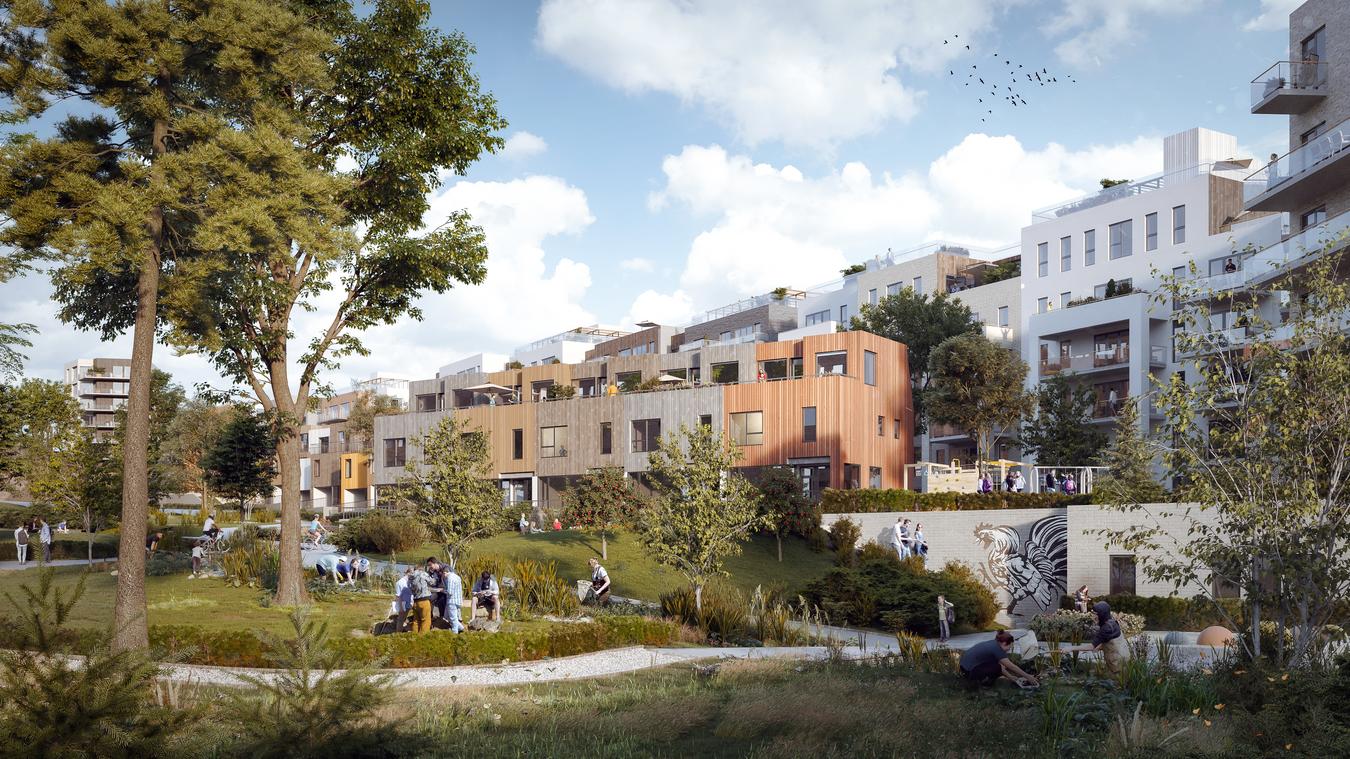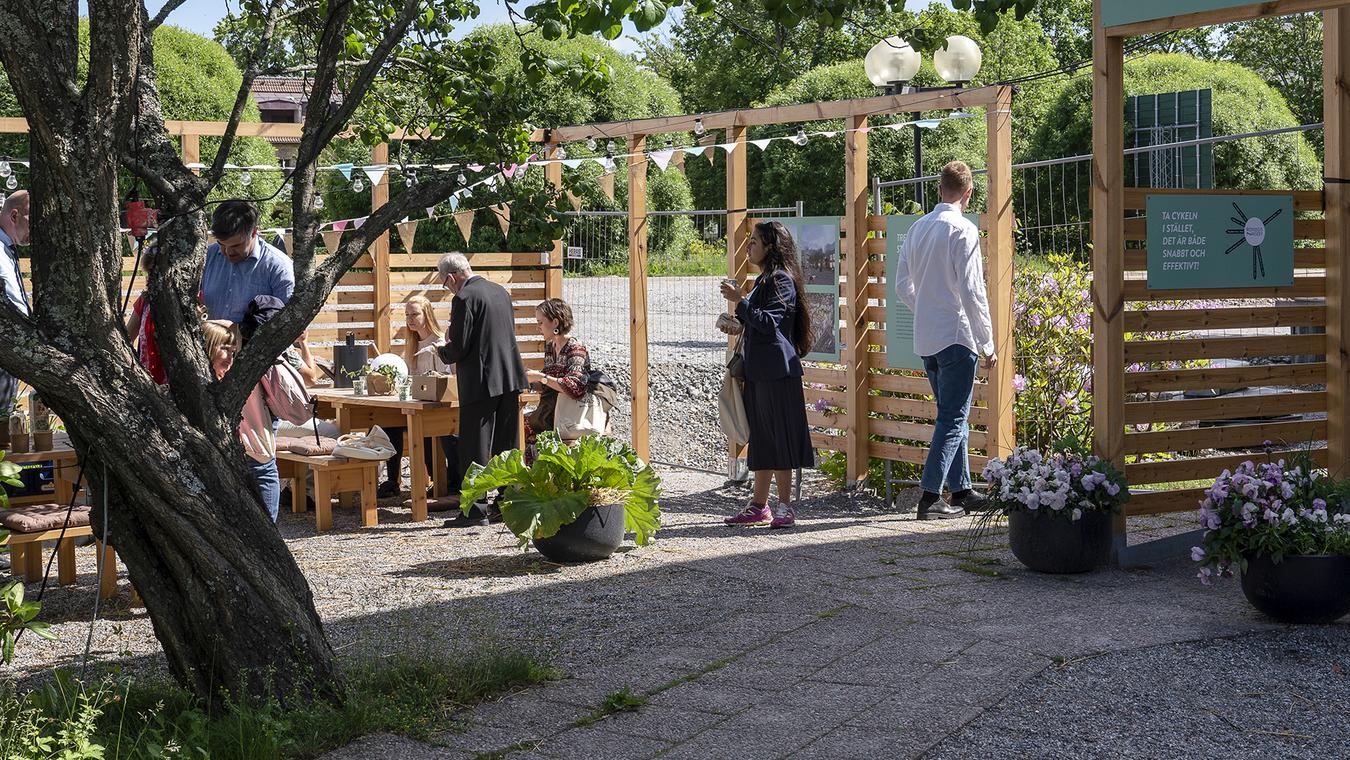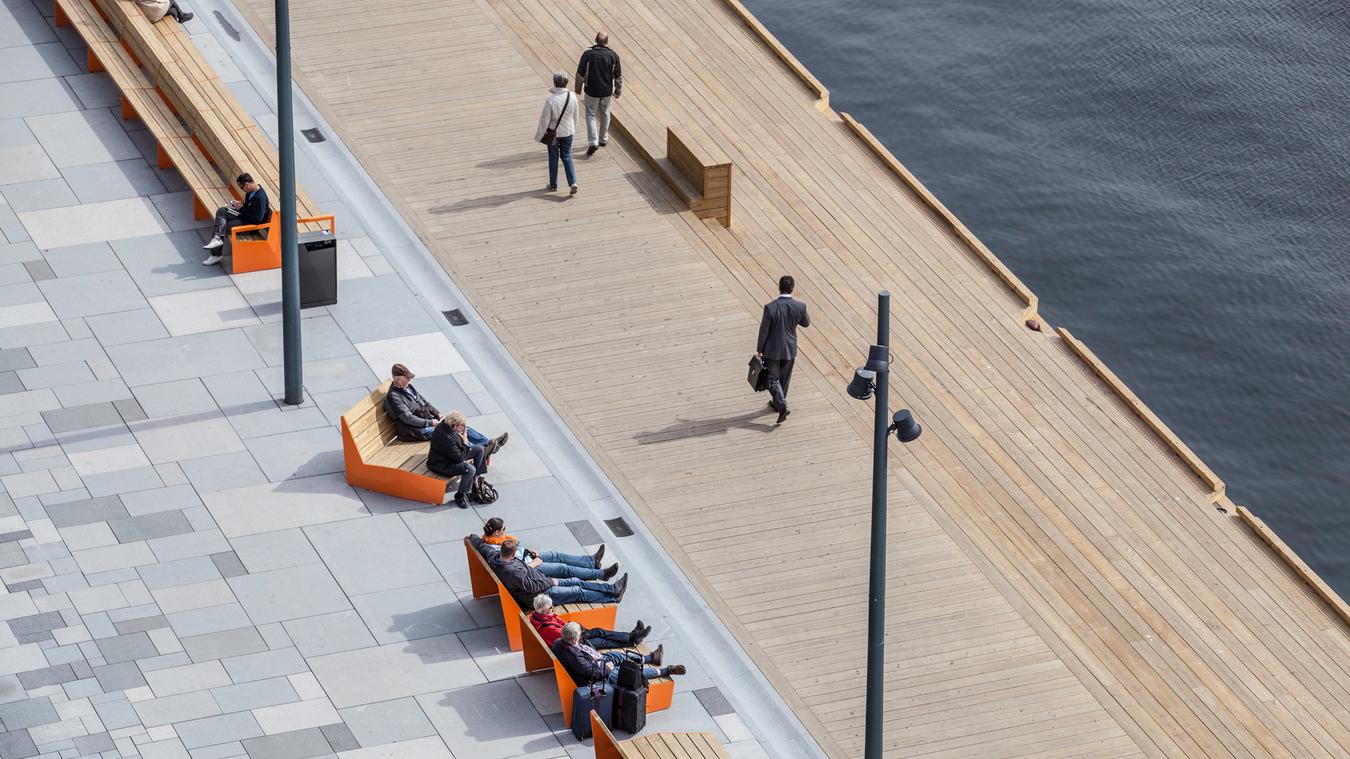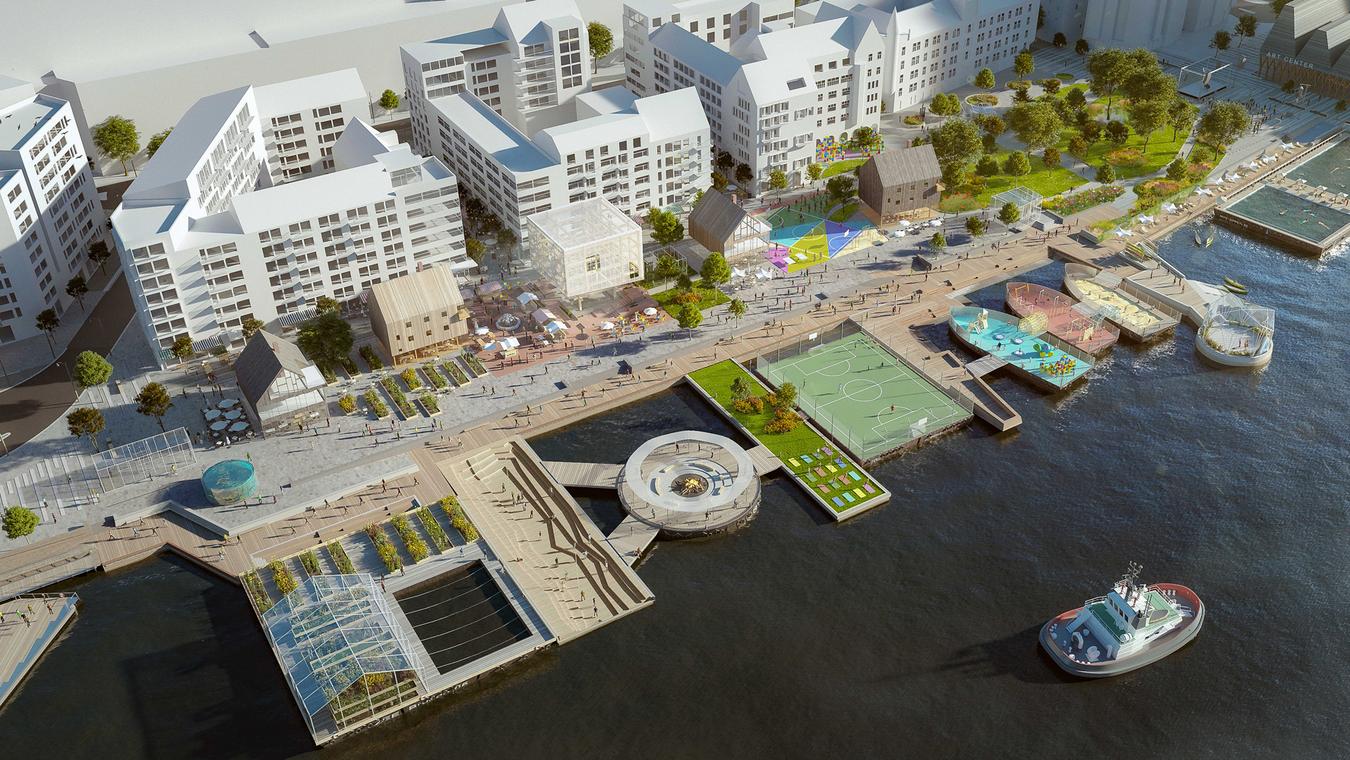Vibrant environments
Did you know that involuntary solitude is even more harmful to health than obesity and smoking? By creating the potential for meetings, we create the potential for well-being.

Ski Municipality has ambitions to become the country's best growing up municipality and hopes that the School Quarter can become an exhibition project to get children into the city center. Illustration: Axion Visuals
Vibrant environments are inclusive, secure and have a strong identity.
Such environments:
- Increase the attractiveness of buildings, places and towns.
- Increase the value of your properties.
- Build bridges and promote cohesion and inclusion.
- Promote processes and collaboration because there are shared interests in creating good urban environments for property stocks and municipal residents.
- Create the conditions for a vibrant town and projects that last over time.
Placemaking: a method for creating vibrant environments
With placemaking as a method, you get processes, tools and quality objectives to create vibrant, attractive and inclusive places. If you start in the right place, you avoid repetition and unnecessary costs.
- Demonstrated success in creating attractiveness and social values.
- Established methods and tools.
- Many good reference examples.

Sustainability center in Roslags-Näsby, a vibrant environment for meetings and dialogue. Photo: Jason Strong
8 keys to success:
- Offer a wide range of activities that suit different people at different times.
- Stimulate curiosity! Allow the space to change with the seasons, time of day and week. Dare to be temporary!
- Create potential for unplanned meetings by manipulating flows and collecting functions and buildings together.
- Programme edge zones and clarify what is private, semi-private and public. Life grows from the edges of places!
- Beloved, attractive and well cared for places with their own identity indicate that people care about them and create satisfaction.
- Make it possible for people to stay longer by offering seating, the opportunity to eat, drink water and go to the toilet.
- Design simple and comprehensible environments. It should be easy, pleasant and safe for everyone to take themselves to and around the place.
- The place should be comfortable. Pleasant microclimate all year round. Easy to see and hear each other through a human scale, the right lighting and good acoustics.
Analysis, process and experience are the keys!
We offer:
- Analyses and information to ensure that the place corresponds to the expectations of interested parties and attracts its target groups through the right functions, programming and design.
- Operation of complex processes with many interested parties from start to finish. With the place in focus, we support the relationship between property owners and the municipality.
- Dialogue and user processes that create commitment and a feeling of ownership.
- Design and programming of environments that are vibrant all year round and accessible to everyone.
- Improvement of both existing areas and the best conditions for living environments in new areas.
- Quick measures to improve a place: temporary experiments, pop-ups, activation, lighting, reprogramming etc.

Aker Brygge: LINK has revitalized Oslo's largest and most dynamic harbor promenade, with several publicly accessible meeting places, which open up for social interaction by the water. Photo: Tomasz-Majewski

Skeppsbron in Gothenburg: A close connection between audience-friendly buildings on the ground floor and a strong city center. Illustration: Brick Visual